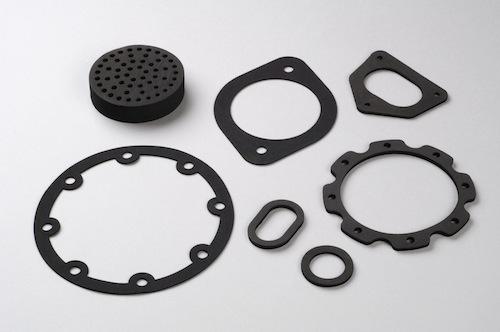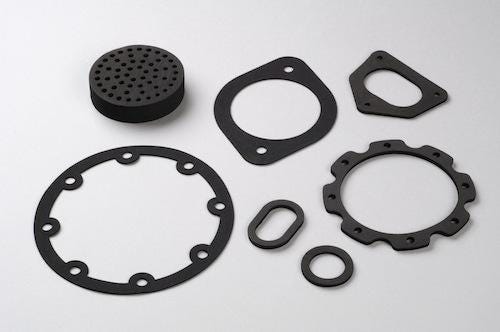December 15, 2011

Gaskets work as a seal between two stationary parts. The seal may provide barriers against fluid ingress or leakage, electrostatic discharge (ESD), electromagnetic interference (EMI), dust, dirt, or other contaminants; resist extrusion and creep under operating conditions; and withstand extremes in operating environments, including very low and high temperatures.
While often a low-cost component in an assembly or subassembly, chronic leaks or failures can have a catastrophic effect on a product or process. Industry's efforts to cut costs, improve efficiencies, increase quality, and maximize productivity and profitability can be disrupted by poor gasket quality, leading to process interruptions, product failure, and expensive maintenance and replacement.

Gasket materials
To select the most appropriate gasket material requires defining the primary function of the gasket. Is the gasket expected to deliver EMI or ESD protection? Is it intended to insulate against heat or electricity? Will it provide protection from environmental conditions? Is it a protection against contaminants? Will it need to be a barrier to fluids?
Important properties when evaluating gasket materials include: cellularity (open or closed), hardness, and compressibility.
Materials can be open- or closed-cell or solid. Open-celled materials, typically open-cell foams, can absorb fluids or resist absorption when compressed. Closed-cell materials, including foams and solid gaskets, require more compression than open-cell materials.
Hardness can be measured using the Shore A scale with Shore A 10-20 considered soft; Shore A 30-40 medium; and Shore A 60-70 hard -- as hard as an automobile tire, for example. Gasket materials can go as high as Shore A 90.
Compressibility can be measured using compression force deflection: the force required to compress one inch of materials 25 percent. Grade 0 materials typically are very soft, requiring 2psi. Grade 4 materials are hard, requiring 16psi to 30psi for compression.
Common gasket materials include:
Elastomers: rubber, chlorosulphonated, polyurethane, ethylene propylenediene (EPDM), fluoroelastomers, neoprene, nitrile and vinyl nitrile (NPVC), silicone, and styrene butadiene (SBR)
Fibrous materials: aramid, asbestos, carbon fiber, cellulose, glass, and mineral fiber
Metals: carbon steel, titanium alloy, aluminum, copper, and stainless steel
In addition to the characteristics of the materials themselves, other considerations include material thickness, compression, and torque. In general, the gasket material should be thick enough to compensate for any surface face irregularities and permit some compression. Torque data should be determined using the surface area; pressure being sealed; and bolt size, number, condition, and lubrication. Overcompression is a common problem and destroys the gasket's ability to recover.
Chemical vs. mechanical gaskets
Design engineers may have a choice between chemical (liquid) and mechanical gaskets. Chemical gaskets need a viscosity that allows the material to fill the gap without flowing out of it. In general, chemical gaskets find their greatest use on assembly lines, where they can offer good sealing for specific applications at a lower cost. However, reliability in maintenance and repair situations can be problematic, and in some cases, while the original gasket may be chemical, the better replacement may be a diecut gasket.
Diecut, or preformed, gaskets are often multipart products. In addition to sealing, they may also work as shims, spacers, or fluid passage walls. They offer a high degree of sameness and reliability. They are easy to apply and mitigate potential operator error. If a leak develops, retightening often fixes the problem.
About the Author(s)
You May Also Like





